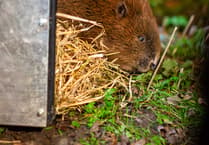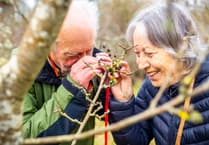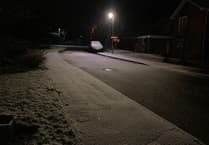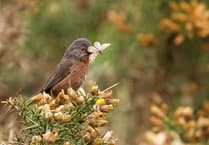Have you ever wondered what happens to some of our iconic heathland species in the winter months? The Wealden Heath Special Protection Area is home to a wide range of rare and endangered species. Many of these species are migratory and choose to travel to warmer climes this time of year. However, there are many that do stay put as temperature plummet.
Woolmer Forest, south of Bordon and to the east of Liphook, is unique in being home to 12 out of 13 of our native UK amphibian and reptile species. In the spring and summer, it’s not uncommon to see adders basking in the sun, or hear the quick rustle of a common lizard as it scurries into the undergrowth. But what happens to them in the winter?
All British amphibian and reptile species hibernate over the winter months between October to February. Since they cannot tolerate exposure to very cold weather, they take shelter in areas such as loose soil, compost heaps or log piles, pond liners and garden sheds. While most hibernate on land, there are some amphibians that will hibernate in ponds, or if we have a mild winter, some newts will enter a state of low activity rather than hibernate.
With many of our amphibian and reptile species being protected by law, how can you help look after them? By making small changes to your garden, you can encourage a wide range of wildlife to your garden. Creating refuge areas near to ponds in the autumn and trying not to disturb rockeries or log piles and leaf litter this time of year can help reduce disturbance and provide these specialised creatures with the best chance to thrive.
If you do come across a newt, toad or frog this time of year in your garden, try to place it near to a suitable hibernation place where it could crawl back in and return to its slumber until the days start to get warmer again.
Whilst the amphibians, reptiles, bats and many insects snooze, this is a great time to connect with nature and observe some of our overwintering birds. Out on the heaths, you’re likely to hear the ‘teacher, teacher’ of the great tit, the musical notes of the robin, or the scratchy song of the Dartford warbler.
Now is also the perfect time to embrace the darkness and discover the magical world of nocturnal wildlife and the night sky. If you’re out admiring the stars, you might also be lucky enough to hear the hoot of a tawny owl.
February hails the return of the South Downs National Park’s annual Dark Skies festival, with an exciting programme of events across the region www.southdowns.gov.uk/dark-night-skies/dark-skies-festival/
On Friday, February 16 the Deadwater Valley Trust and National Park rangers will be leading a stargazing session at Hogmoor Inclosure, Bordon, between 6pm and 8pm (weather permitting). The cost is £3 per person and booking is required. Email [email protected] to book a spot.
Olivia French
Heathlands Engagement Officer





Comments
This article has no comments yet. Be the first to leave a comment.